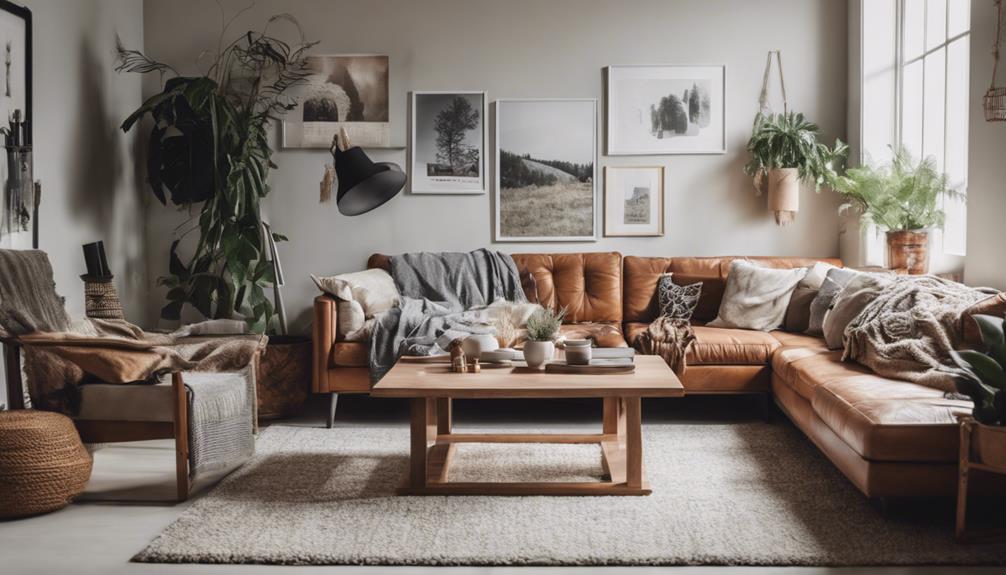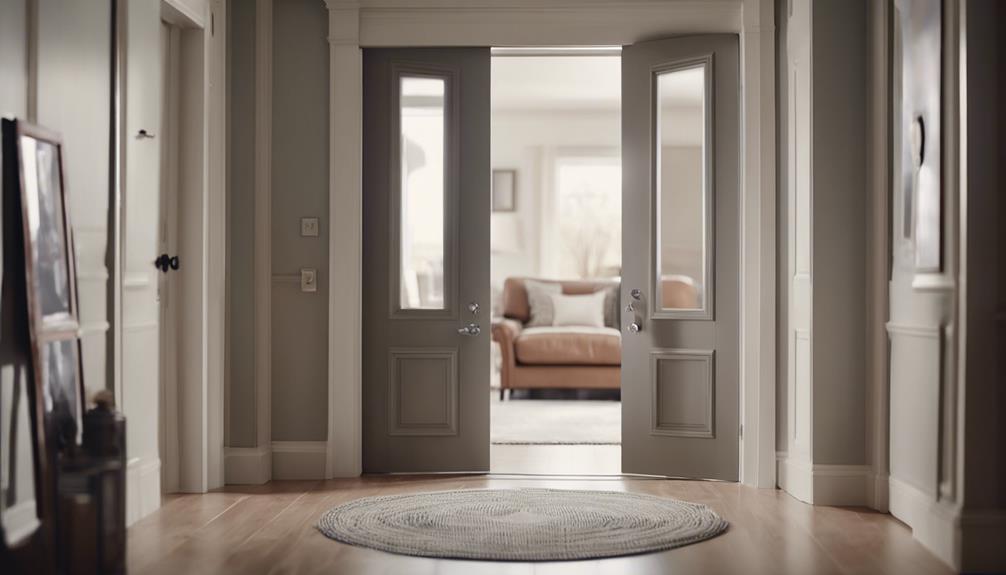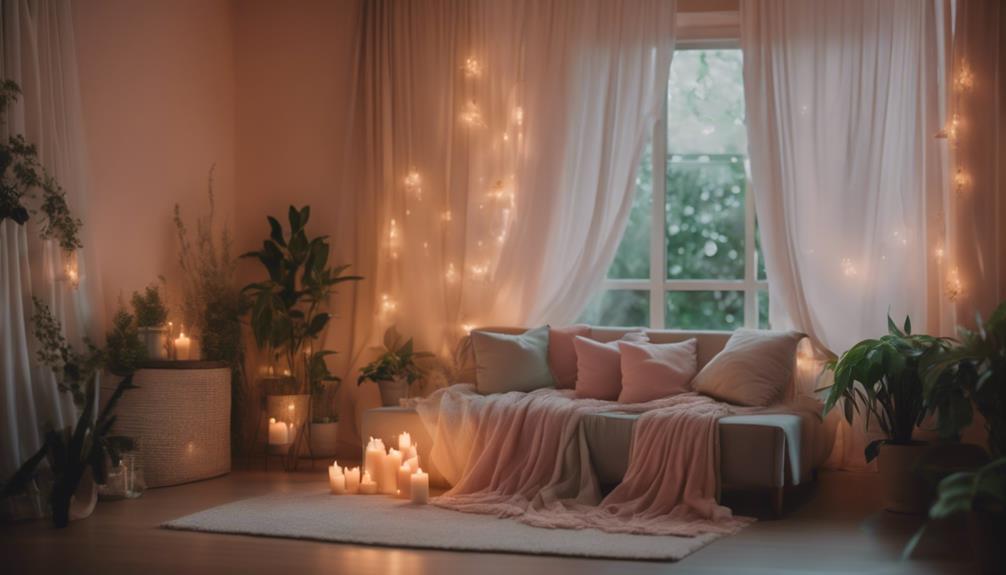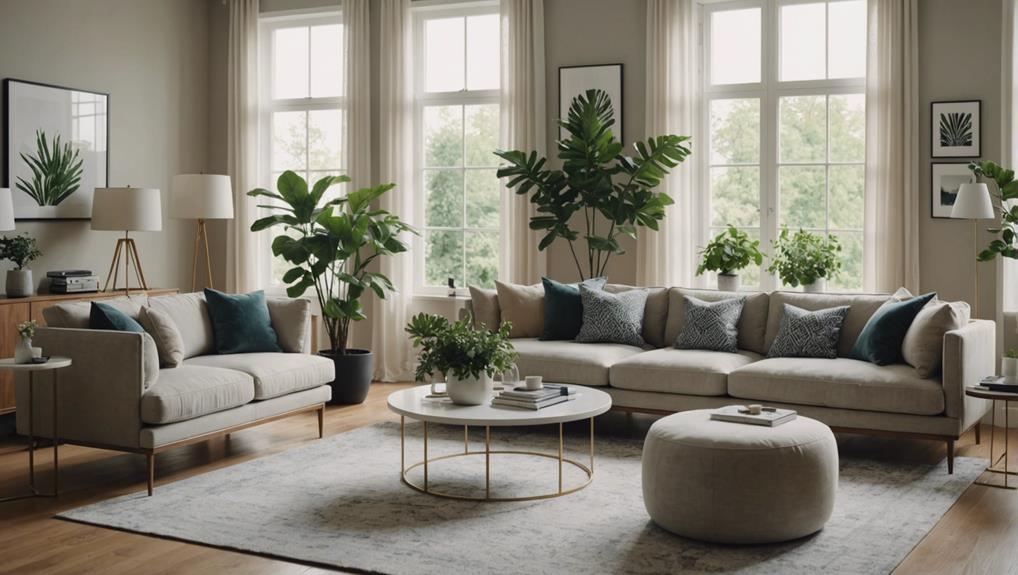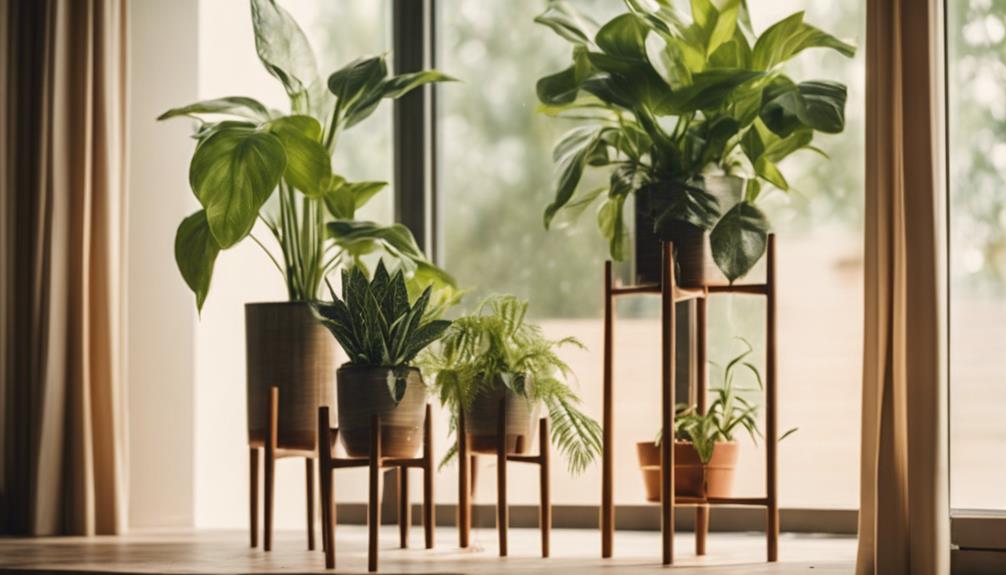Home decor styles range from the traditional elegance of Traditional to the blend of classic and modern in Transitional, and the sleek simplicity of Contemporary. There's also the rustic appeal of Modern Farmhouse and the calming coastal vibe of Modern Coastal. Mid-Century Modern focuses on clean lines, while Bohemian embraces a maximalist feel. Industrial style features raw materials, and French Country exudes rustic charm. Each style brings its unique flair to interior design. Explore further to discover which style resonates most with your aesthetic preferences.
Key Takeaways
- Traditional Home Decor Style features classic furniture and rich fabrics.
- Transitional Home Decor Style blends traditional and modern elements for a timeless feel.
- Contemporary Home Decor Style focuses on clean lines and warm colors.
- Modern Farmhouse Home Decor Style combines traditional charm with modern flair.
- Modern Coastal Home Decor Style incorporates beach-inspired elements and natural materials.
Traditional
When considering traditional home decor styles, one immediately envisions classic furniture pieces and elegant design elements that exude a sense of heritage and sophistication. Traditional home decor style is characterized by the use of classic furniture such as Louis XVI chairs and paneled mahogany walls. Rich fabrics like silk and velvet, along with traditional patterns such as damask and toile, are often incorporated to add a touch of luxury to the space. Formal shapes and symmetry play a significant role in traditional design, creating a sense of order and elegance.
In traditional interiors, antique accessories like 19th-century sconces and ornate moldings are commonly found, adding a touch of history and charm to the decor. Elegant draperies further enhance the sophisticated look of traditional design. These elements, along with a focus on heritage and timeless appeal, come together to create a refined and inviting atmosphere in traditional home decor styles.
Transitional
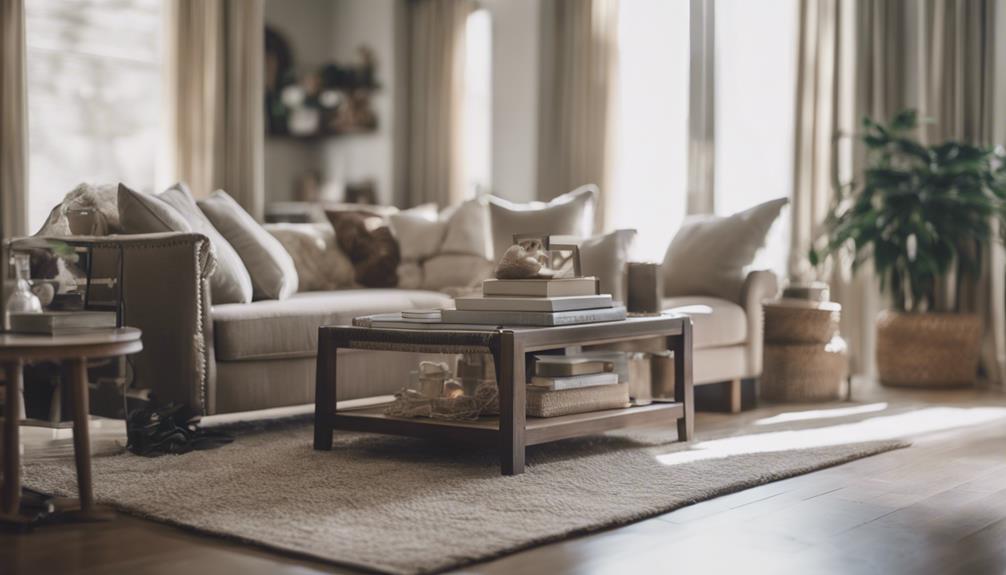
Blending traditional and modern elements, a hybrid style in home decor achieves a harmonious mix that appeals to those seeking a balance between classic and contemporary aesthetics. This interior design approach combines classic elements such as herringbone floors and Shaker-style cabinets with modern lines, creating a seamless blend of the two styles. Hybrid design often features a fresh, white take on traditional furniture, giving a clean and updated look to the space.
Designers use hybrid style to bridge the gap between traditional and contemporary aesthetics, offering a versatile approach that caters to individuals looking for a harmonious fusion of old and new. This style is popular for its ability to bring together the warmth and familiarity of traditional design with the sleekness and simplicity of modern decor. By incorporating both classic and contemporary elements, hybrid design provides a balanced and timeless feel to any home interior.
Contemporary

Contemporary interior design blends various styles like fusion and mid-century modern, focusing on clean lines and warm colors. It incorporates geometric patterns and a minimalist approach with a touch of comfort.
The use of warm tones and a mix of textures creates a cozy and visually appealing atmosphere in contemporary spaces.
Modern Design Elements
Incorporating clean lines, minimal embellishments, and a neutral color palette, modern design elements, also known as contemporary style, create a sleek and sophisticated aesthetic. Here are four key elements of modern design:
- Sleek furniture: Modern interiors feature streamlined and minimalistic furniture pieces that emphasize functionality and simplicity.
- Geometric patterns: Incorporating geometric shapes in decor adds a contemporary touch and visual interest to the space.
- Mix of textures: Modern design often combines various textures like metal, glass, and wood to create a harmonious and inviting atmosphere.
- Warm colors: While neutral tones are predominant, modern spaces occasionally incorporate pops of warm colors to add vibrancy and depth to the overall look.
Timeless Aesthetic Appeal
We can see how the enduring charm of contemporary design lies in its ability to seamlessly blend clean lines, warm colors, and geometric patterns, creating a timeless aesthetic appeal. Contemporary interior design focuses on simplicity while incorporating elements of evolving, bohemian, and mid-century modern styles. This style emphasizes the balance between form and function, resulting in a harmonious and inviting atmosphere. A key feature of contemporary decor is its timelessness, making it a popular choice for those seeking a modern yet enduring aesthetic appeal.
| Contemporary Design | |
|---|---|
| Timelessness | Enduring Charm |
| Form and Function | Balance |
| Geometric Patterns | Modern Aesthetic |
| Simplicity | Clean Lines |
Modern Farmhouse
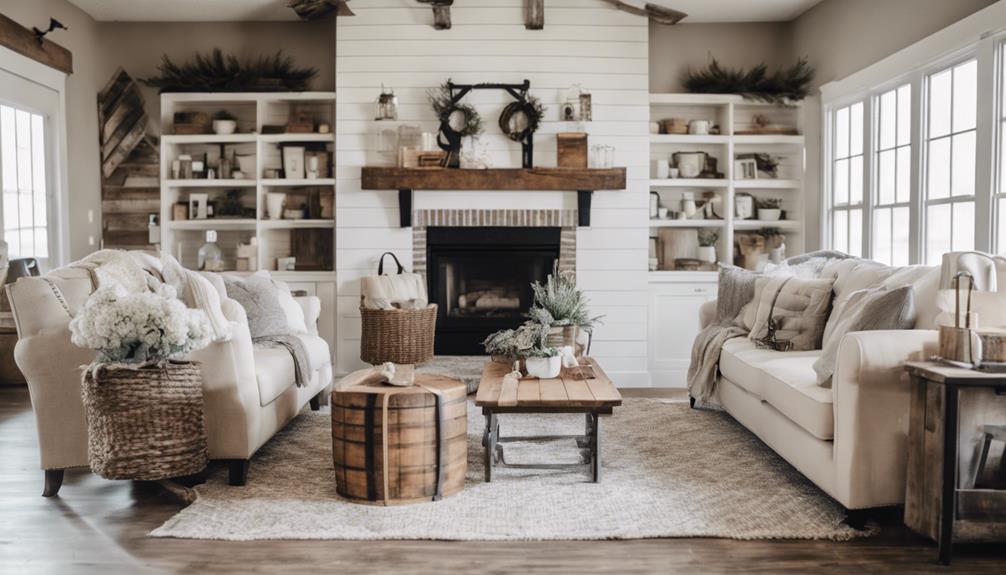
Embracing a blend of traditional charm and modern flair, Modern Farmhouse style seamlessly merges rustic elements with contemporary design touches.
Cozy Atmosphere: Modern Farmhouse decor creates a warm and inviting ambiance perfect for relaxation.
Neutral Color Palettes: Soft whites, warm grays, and earthy tones dominate the color scheme, enhancing the sense of serenity.
Rustic Accents: Reclaimed wood, distressed finishes, and vintage pieces add a touch of history and character to the space.
Shiplap Walls: A signature feature of this style, shiplap walls bring texture and a hint of countryside charm to modern interiors.
With a focus on simplicity and comfort, Modern Farmhouse design strikes a balance between old and new, resulting in a timeless aesthetic that feels both familiar and fresh. The use of farmhouse sinks, barn doors, and industrial lighting further contributes to the classic yet contemporary look that defines this popular decor style.
Modern Coastal
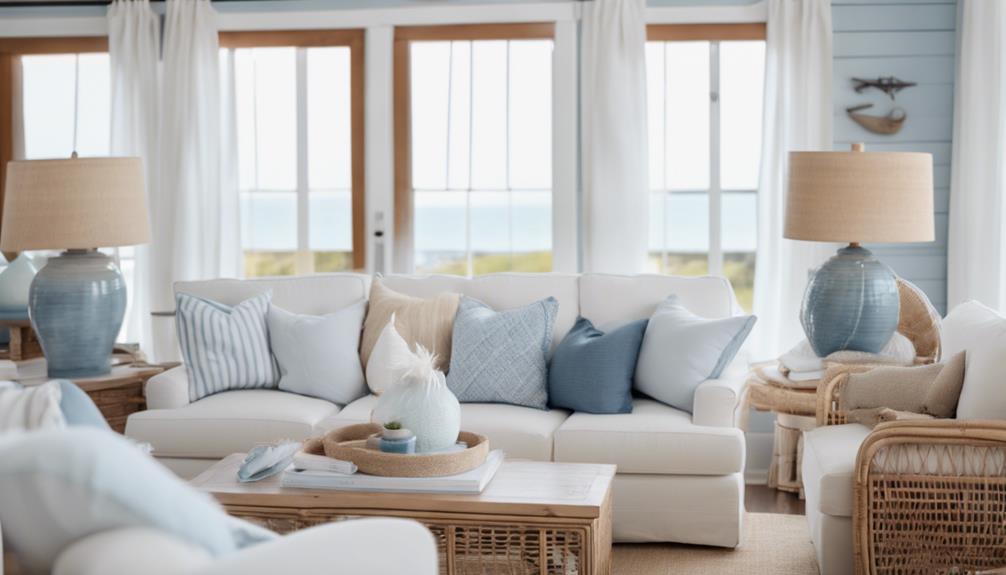
When it comes to Modern Coastal decor, we see a soothing palette of soft blues, sandy neutrals, and shades of turquoise that mirrors the sea and sky.
The furniture often features beach-inspired elements like wood, rattan, and seagrass, bringing a coastal vibe indoors.
Nautical accents such as shells, driftwood, and other marine motifs are common accessories in Modern Coastal interiors.
Coastal Color Palettes
In modern coastal home decor styles, warm white tones reminiscent of sandy beaches and ocean-inspired hues like blues and greens are commonly featured in coastal color palettes.
Natural materials such as weathered wood, sea glass, and woven textures bring a beachy feel to modern coastal design.
Soft pastels, like pale pinks and light blues, are used to create a serene and relaxed atmosphere in coastal color schemes.
Beach-inspired accessories such as seashells, driftwood, and nautical elements enhance the coastal theme in interior design.
Earthy tones like sandy beige, driftwood gray, and seafoam green are often incorporated to evoke a calming and inviting ambiance.
Beach-Inspired Furniture
Our modern coastal interior design incorporates beach-inspired furniture crafted from natural materials like reclaimed woods and rattan, enhancing the relaxed and seaside ambiance.
In Modern Coastal style, furniture plays an essential role in creating a coastal feel within a space. The use of natural materials like reclaimed woods and rattan adds warmth and texture, reflecting the beach-inspired elements of this design. The furniture often features clean lines and a simple yet elegant design, contributing to the overall relaxed atmosphere.
Pairing these pieces with ocean-inspired hues such as soft blues and sandy neutrals further enhances the coastal vibe. By incorporating beach-inspired furniture into your home, you can achieve a tranquil and inviting space reminiscent of seaside living.
Nautical Decor Accents
Nautical decor accents play a pivotal role in defining the Modern Coastal home decor style, drawing inspiration from the mesmerizing elements of the ocean and beach.
- Navy Blue and White Color Schemes
- Rope Details and Anchor Motifs
- Marine-Inspired Artwork
- Seaside Feel with Beach Elements
In Modern Coastal design, nautical decor elements like navy blue hues, rope details, and marine-inspired artwork are commonly used to create a coastal vibe. Incorporating these features alongside beach elements such as seashells and natural materials like driftwood can help evoke a relaxed seaside feel in your living space.
Mid-Century Modern
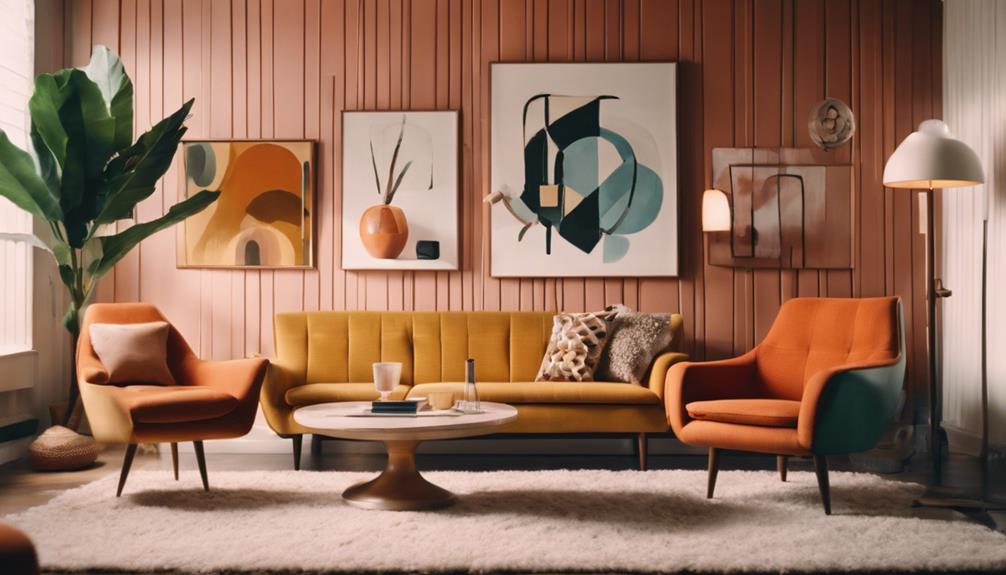
With warm wood paneling and Japanese influences, Mid-Century Modern is a design style originating from the mid-20th century. This retro aesthetic often incorporates elements such as brown bathroom tiles and chrome plumbing fixtures. Embracing clean lines and organic shapes, Mid-Century Modern captures a distinct era of design from the mid-1940s to the early 1970s. Architects like Frank Lloyd Wright played a significant role in shaping the iconic look of this style.
Functionality is a key aspect of Mid-Century Modern, with a focus on simplicity and a harmonious blend of form and function. The use of warm wood tones adds a cozy and inviting feel to spaces designed in this style. The emphasis on clean lines creates a sense of openness and minimalism, while organic shapes bring a natural element to the design. Overall, Mid-Century Modern remains a popular choice for those seeking a timeless and elegant home decor style that seamlessly blends vintage charm with modern sensibilities.
Bohemian
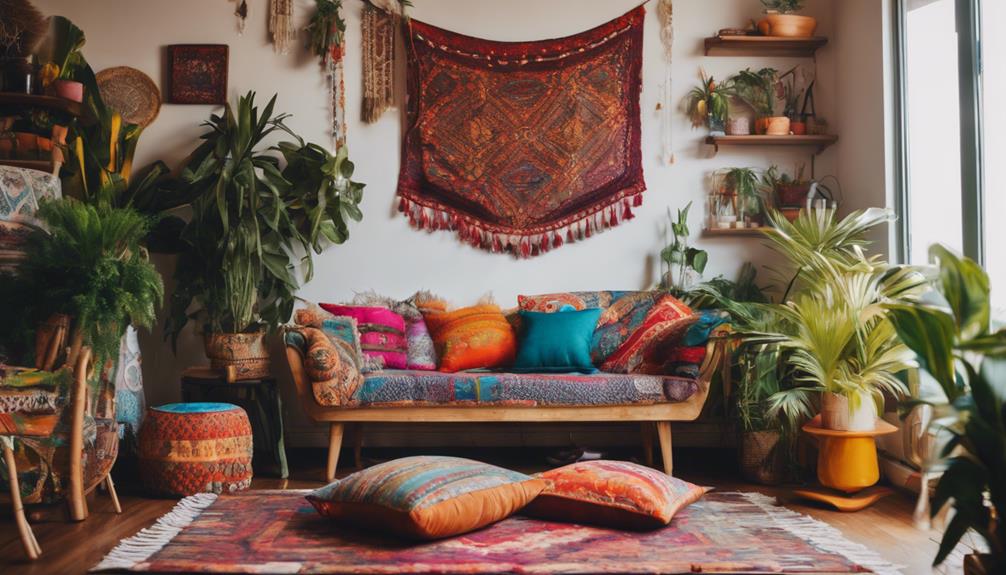
Embracing a vibrant mix of rich colors, abundant textiles, and globally inspired accents, Bohemian style exudes a maximalist aesthetic. This eclectic design approach combines various patterns, textures, and decor elements to create a free-spirited and artistic vibe.
Natural materials like rattan, bamboo, and jute are commonly used in Bohemian interiors to introduce warmth and earthy textures. The laid-back atmosphere of Boho design is enhanced with layered rugs, floor cushions, and vintage pieces, offering a relaxed and cozy feel.
Cultural influences play a significant role in Bohemian decor, with an array of vintage items and handmade crafts contributing to a unique and personalized space.
- Bohemian style is all about embracing a maximalist aesthetic.
- Natural materials like rattan and jute are frequently used in Boho interiors.
- The Bohemian design encourages a laid-back and relaxed atmosphere.
- Cultural influences and vintage finds are key elements in creating a Bohemian space.
Industrial
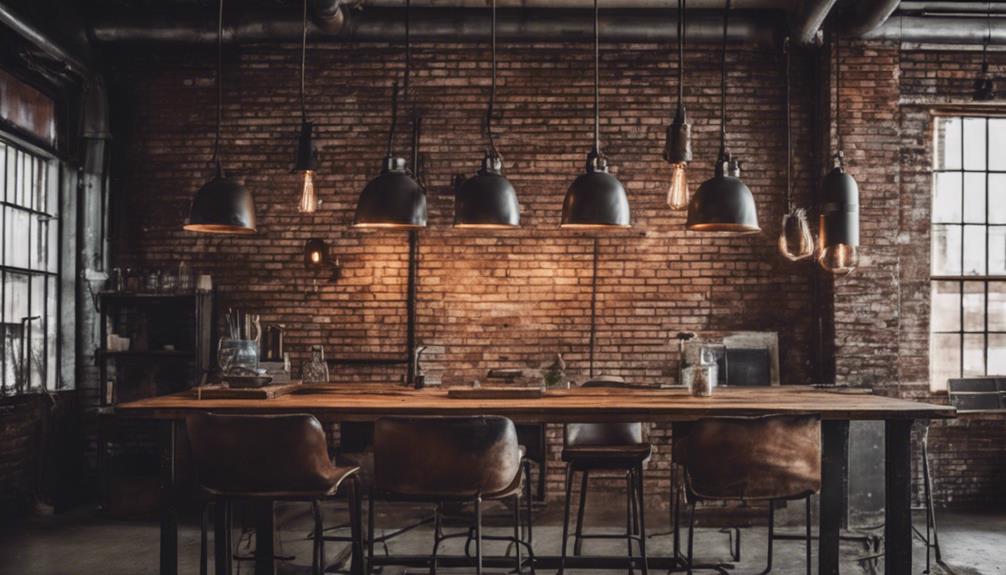
Coming from the vibrant and eclectic world of Bohemian design, we now shift our focus to the raw and edgy aesthetic of Industrial interior style. Industrial design incorporates elements like concrete walls, steel details, and spartan windows, creating a modern and urban atmosphere.
Neo-Industrial, a variant of this style, blends industrial architecture into residential spaces, giving a contemporary and minimalist look. Unlike traditional Industrial Design, Neo-Industrial interiors focus on sleek and modern vibes. Kathleen McCormick is a notable figure known for integrating industrial elements into home designs, adding a unique touch that resonates with the urban feel.
Industrial design often features a mix of raw materials, exposed structural elements, and a minimalist approach, all contributing to the modern and industrial ambiance of the space. This style is favored for its simplicity, functionality, and clean lines, making it a popular choice for those seeking a contemporary and edgy look in their homes.
French Country
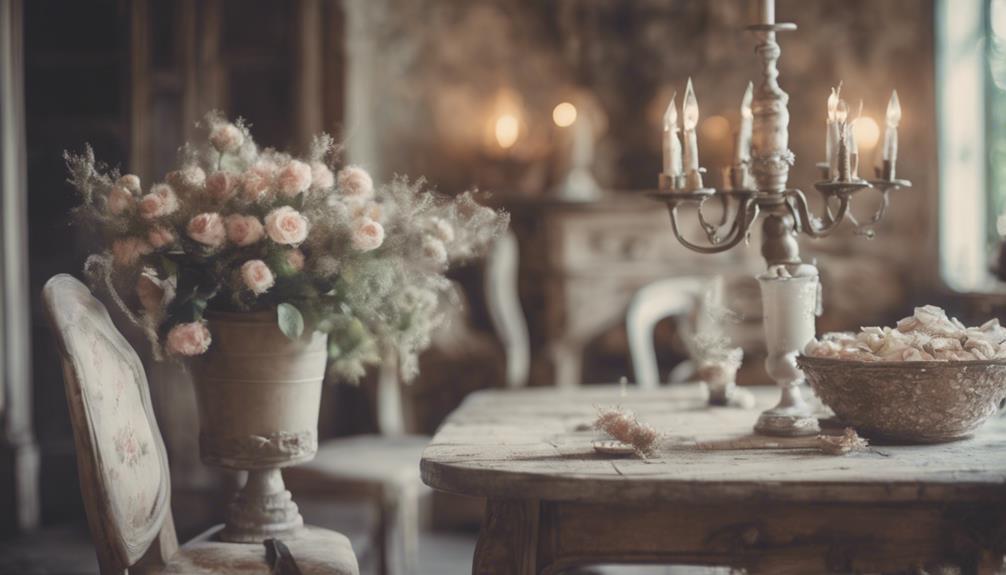
Let's explore the charming world of French Country style, inspired by the rustic allure of the French countryside. French Country style embraces the following elements:
- Rustic Charm: This style captures the essence of the French countryside with its rustic and inviting appeal.
- Natural Materials: Incorporating wood, stone, and wrought iron, French Country decor highlights the beauty of natural materials.
- Distressed Furniture: Characterized by aged and weathered furniture pieces, this style adds a touch of vintage elegance.
- Warm Ambiance: With soft, muted color palettes, cozy elements, and intricate detailing, French Country interiors create a warm and welcoming atmosphere.
In French Country design, you'll often find toile fabrics, rustic wood beams, and a mix of antique and new pieces, blending the old with the new to achieve a timeless aesthetic. This style effortlessly combines elegance with comfort, making it a popular choice for those seeking a cozy and charming home decor theme.
Frequently Asked Questions
What Is the Most Popular Home Decor Style?
The most popular home decor style currently is Modern Farmhouse. It features neutral colors, reclaimed woods, and rustic accessories for a cozy look. Scandinavian, Mid-Century Modern, Industrial, and Bohemian are also trendy options.
Scandinavian highlights simplicity and light colors, while Mid-Century Modern showcases retro furniture and bright accents. Industrial incorporates raw elements like exposed brick. Each style offers unique aesthetics to suit different preferences and tastes.
What Are the 7 Concepts of Interior Design?
We acknowledge the significance of the 7 concepts of interior design.
Space, line, form, light, color, texture, and pattern are vital in creating functional and visually appealing spaces.
Space sets the boundaries, while line guides the eye.
Form, light, color, texture, and pattern all contribute to the overall style and atmosphere of a room.
How Do I Define My Home Decor Style?
When defining our home decor style, we start by looking at our living space and creating a Pinterest board to spot recurring elements. By listing distinctive features in our furniture, accessories, and colors, we can pinpoint our decor preferences.
Comparing current items with our inspirational board helps align with specific styles. Understanding our personal style makes planning a room makeover easier.
Our home should reflect the evolving styles we love, reflecting our changing tastes and preferences.
What Is the 1950S Decorating Style Called?
In the 1950s, the decorating style is commonly known as 'Mid-Century Modern.' It showcases warm wood paneling, retro furniture, and geometric patterns. This design trend spans from the mid-1940s to the early 1970s, drawing inspiration from Japanese design and Frank Lloyd Wright's organic modernism.
Notable features include brown bathroom tiles, chrome plumbing fixtures, and an emphasis on functional aesthetics.
Conclusion
To sum up, the world of home decor styles is as diverse as a bustling city street.
From the classic elegance of Traditional to the laid-back vibes of Bohemian, there's a style to suit every taste and personality.
Whether you prefer the sleek lines of Contemporary or the rustic charm of Modern Farmhouse, there's a style waiting to transform your space into a reflection of your unique style and personality.
Explore, experiment, and make your home truly your own.
